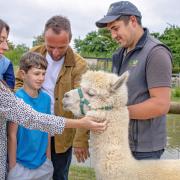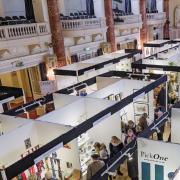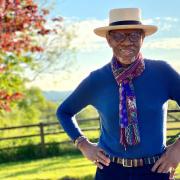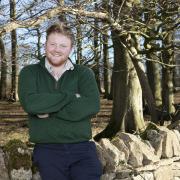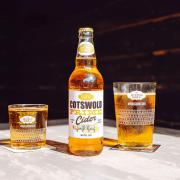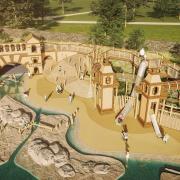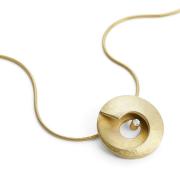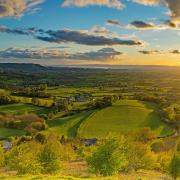When you’ve made the UK the Number 1 market for Jaguar Land Rover in the world. Where do you go? We talk to Jaguar Land Rover MD, Jeremy Hicks
In May, Jaguar Land Rover reported retail sales of over 500,000 for the first time, up 13% year-on-year. The combination of an increased demand for new models; solid growth in markets including Europe, North America and the UK helped support full-year financial revenues of £22.2 billion, up £342 million on the previous 12-month period.
And the region that sold the most vehicles? The UK. A hearty pat on the back for UK managing director Jeremy Hicks. Now the real work starts: staying at the top, which will have been made harder after the UK’s infamous decision to exit the European Union.
However, we meet a couple of weeks before the referendum, and Jeremy is upbeat. Jaguar Land Rover is now the largest automotive manufacturer in the UK and it plans to invest around £3.75 billion over the year to support sustainable, profitable growth in the future.
Much of the UK growth has been a huge rise in fleet sales, which grew by 194% and Land Rover’s by 53% compared to the same period in 2015.
Jeremy joined Jaguar Land Rover in 2011 from Audi UK where he was a director. Previously he worked for Volkswagen Group UK Ltd, and before that Vauxhall, where he joined from university on a graduate scheme. This man must have oil running through his veins. “I always wanted to work with cars and I love great brands,” he says. Clearly joining Jaguar Land Rover was a meeting of minds. “I remember being at the Paris motor show in 2010 and seeing the Evoke as a concept car. I knew it would transform Jaguar Land Rover.” The Evoke is currently the most successful Jaguar Land Rover has ever produced. “It’s bold, beautiful and last
year we had our best year ever with it,” adds Jeremy.
In fact the company is so successful in the UK that the problem is more about managing the growth, rather than growth itself. “We have around 200 retailers selling cars. We are recruiting around 300 technicians to work in them this year, and we will need more in the next five years.
The manufacturer is also supporting its dealership in retail investment. A brand new outlet is being built at New Milton, Oxfordshire and the Droitwich dealership is undergoing a radical refurbishment. These days the retail principles of the
high street are being applied to car purchases too.
“People want a top class retail experience whether they are shopping for clothes or cars,” says Jeremy. For years many car dealerships have offered free teas, coffees and comfy chairs. Jaguar Land Rover is taking customer experience to a new level, including ‘drive through’ servicing.
The way people are buying cars is changing, he says. “Digital is changing everything. Anyone can go online and chose their car, its colour, trim, engine specification. But they still want to smell a new car before they buy. Though people used to visit a dealership five or six times before buying, now it’s down to once or twice before they drive it away.”
While customer experience is a top priority for Jaguar Land Rover, it clearly doesn’t extend to the 350 staff who work with Jeremy at the company’s Gaydon manufacturing base near Warwick.
Instead of arriving at expected swanky offices, on the vast site (almost a city) which is Jaguar Land Rover, I enter a very large portacabin where every desk, including Jeremy’s, is the same size and people work cheek by jowl. All the company’s investment is going into the customer, not the support staff.
Jaguar Land Rover directly employs 35,000 people in the UK, up 20,000 from five years ago, and indirectly providing work (taking suppliers into account), for over 250,000 nationally.
“We are producing cars that people want,” says Jeremy. “We are world class manufacturers and our plant at Halewood now makes more cars than ever in its history.” Jaguar Land Rover operations are currently split across five sites with three vehicle manufacturing plants: at Castle Bromwich, Solihull at Halewood near Liverpool, and two advanced design and engineering centres at Gaydon and Whitley in the Midlands.
“We stand for design and engineering excellence,” he adds. And he’s right. All Jaguar Land Rovers are designed and developed at Gaydon where 10,000 people work on product development. It collaborates with WMG (Warwick Manufacturing Group) but doesn’t outsource its design. “We do it better ourselves,” adds Jeremy.
So how will Jaguar Land Rover stand up to challenger brands from new Asian automotive markets such with their Ssang Yong, Hyundai or Kia brands?
“The newcomers are good, but they are budget,” says Jeremy. “We are about brand and quality. What’s been lost are the mid-range cars.”
Jaguar Land Rover was bought by Tata Motors in 2008. Since then the Indian company has poured hundreds of millions into the business, benefitting the UK as a whole. “Tata are great owners,” says Jeremy. “They are good for the long term.”
Let’s hope Brexit doesn’t change that.




